The Roman Empire stands as a monument of human ambition and power. From its humble beginnings as a small city-state, Rome’s influence spanned continents and left an enduring legacy on language, law, engineering, and culture. But beyond the grand amphitheaters and tales of legendary military conquests lies a world of lesser-known facts that illuminate surprising, strange, and awe-inspiring aspects of this ancient civilization.
15 Surprising Facts About the Roman Empire
- Purple dye was more valuable than gold.
- Romans used urine as mouthwash.
- Gladiator sweat was a sought-after beauty product.
- Emperor Nero married a man.
- Chariot racing was even more popular than gladiator fights.
- There was a thriving takeout food industry.
- Concrete was a Roman invention (and it was better than ours).
- The Roman Empire had a vast network of sophisticated roads.
- Romans pioneered techniques in brain surgery.
- Roman toilets were communal and social.
- One Roman emperor declared war on the sea.
- The Romans had a complex system of graffiti.
- The Colosseum could be flooded for mock naval battles.
- The last Roman emperor was named Romulus Augustulus.
- The Byzantine Empire was the continuation of the Eastern Roman Empire.
1. Purple Power:
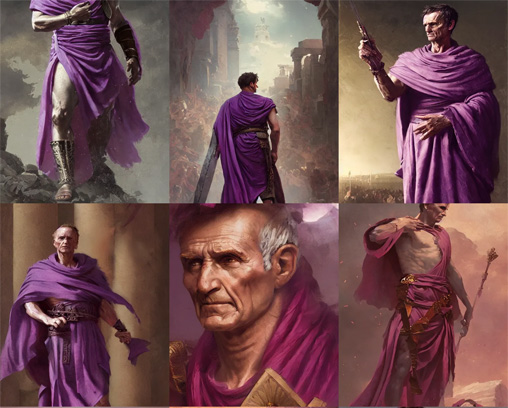
Imagine a color so precious, so exclusive, it outshines even gold. For the Romans, this was purple. The source of this luxurious dye was the murex sea snail, and producing enough for a single garment required thousands of these tiny creatures. No wonder only emperors and the ultra-wealthy could afford to drape themselves in this regal shade.
2. Urine as Mouthwash?

Brace yourself for a cringe-worthy fact: Romans thought urine made a great mouthwash (especially urine from Portugal, for some reason!). To us, this sounds beyond disgusting, but remember, they didn’t have Colgate. That ammonia in urine does act as a cleaning agent, so there’s a tiny bit of logic to their madness. Thankfully for us, minty toothpaste was eventually invented!
3. Gladiator Glamour:
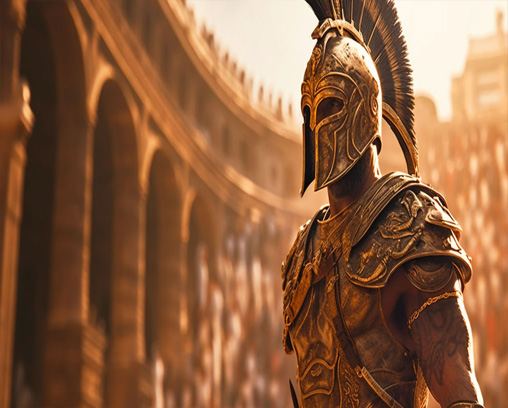
We think of gladiators as sweaty, blood-spattered brutes. But to the Romans, they were the rock stars of their era. Victors were adored, and women went wild for a bit of their sweat, believing it was a magical potion for love or flawless skin. Imagine paying top dollar for a skincare product that’s the ancient equivalent of used gym socks!
Read More: 15 Mind-Blowing Facts About Ancient Civilizations
4. A Husband Named Sporus:
Emperor Nero was notorious for his outlandish behavior and twisted sense of power. In one particularly shocking act, he had a young boy named Sporus castrated, then “married” him in a lavish public ceremony. This horrifying disregard for both human dignity and Roman traditions shows just how far Nero strayed into the realms of delusion and depravity.
5. Chariot Fever:
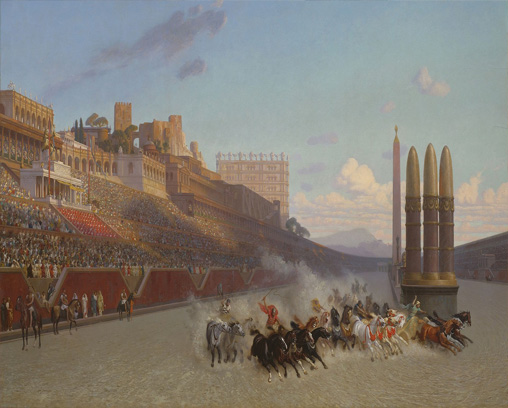
Think football rivalries get heated? They’ve got nothing on Roman chariot racing fans. Thousands packed the Circus Maximus, passionately supporting their favorite teams (identified by colors). Charioteers were like modern sports superstars, and losing your team could spark full-blown riots!
6. Fast Food, Ancient Style:
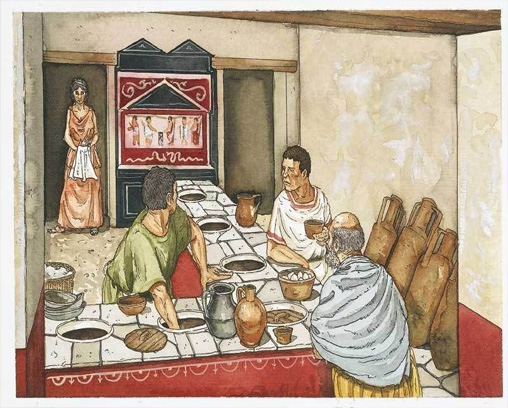
Romans were always on the go, and sometimes, a home-cooked meal was out of the question. Enter thermopolia – little snack shops that lined the streets, offering hot food and drinks. Picture them as the ancient version of our fast-food joints, catering to busy Romans who needed a quick bite.
Read More: Lost Civilizations: Unravel 15 Enigmatic Cultures | History’s Secrets
7. Superior Concrete:
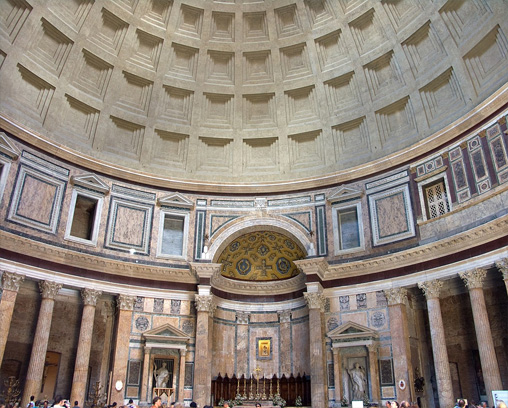
Image Source: wikipedia By I, Jean-Christophe BENOIST
Many Roman structures have stood the test of time – and that’s no accident. Their concrete recipe was top-notch. Using a special mix of volcanic ash, Romans created a building material so strong that some of their aqueducts, bridges, and temples remain intact 2000 years later. It makes you wonder what their secret ingredient was!
8. The Road to Empire:
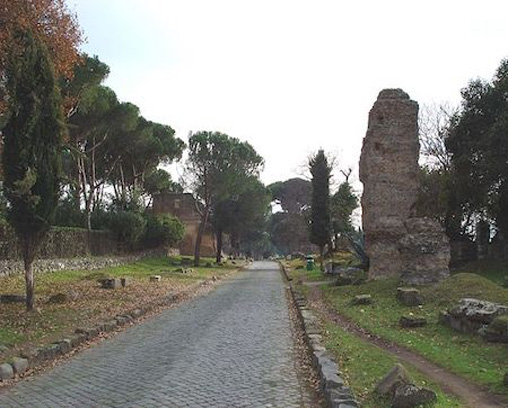
When you think of Roman power, think roads. Their vast, expertly engineered network connected far-flung corners of the empire. These roads weren’t just for leisurely strolls; they enabled rapid movement of armies, facilitated trade, and speeded up communication. In a way, the Roman roads were the veins and arteries that kept the empire’s heart pumping.
9. Ahead of Their Time in Surgery:

Romans weren’t afraid to get hands-on when it came to medicine. Surprisingly, they conducted complex procedures like brain surgery! While it’s a bit scary to think about the tools they used, archaeologists have discovered medical instruments and texts that prove Romans dared to treat head injuries, tumors, and possibly more. They were truly medical pioneers.
Read More: History’s Biggest Turning Points: Myths, Facts, and Unexpected Impacts
10. Toilets – A Social Affair:
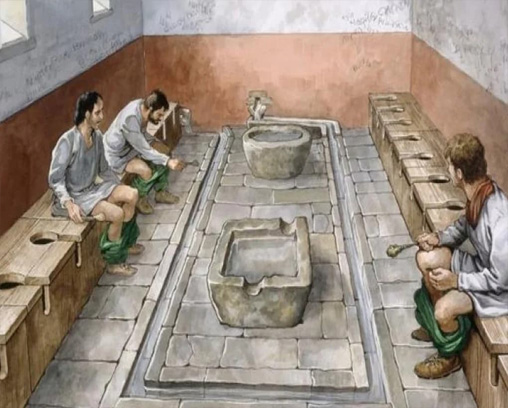
Forget private bathroom stalls! Roman public toilets were all about getting social. Picture long stone benches with holes, zero partitions, and the pièce de résistance… a communal sponge on a stick for cleanup shudder. If you needed to use the facilities, you’d better be prepared to chat with your neighbors!
11. War on Neptune:
Emperor Caligula takes the prize for bizarre behavior. After a failed invasion of Britain, he allegedly ordered his soldiers to attack the sea and collect seashells as “spoils of war.” Was this a strange power play, a sign of madness, or some twisted joke? Historians still debate it, but one thing’s for sure: Caligula was not your average emperor!
12. Ancient Street Art:
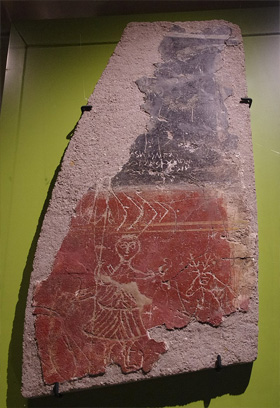
Image Source: wikipedia By Codrin.B
Forget Instagram; Romans expressed themselves on walls. Graffiti covered their cities, ranging from saucy jokes and political slogans to love poems and everyday complaints. It’s like peeking into a massive, centuries-old, and sometimes very rude social media feed!
Read More: 15 Mind-Blowing Facts About Medieval Times That Will Transport You Back in History
13. Epic Naval Battles (Indoors):
Imagine holding a massive naval battle… inside a building. The mighty Colosseum wasn’t just for gladiatorial combat! It was designed with a complex flooding system, allowing them to stage elaborate mock sea battles, complete with warships and all the watery action. Talk about next-level entertainment!
14. A Fateful Name:
Bookending Roman history is an intriguing coincidence (or perhaps a touch of historical irony). The legendary founder of Rome was Romulus, and the last emperor of the Western Roman Empire? Romulus Augustulus. It makes you wonder if names carry some unseen power after all.
15. The Empire That Never Ended:
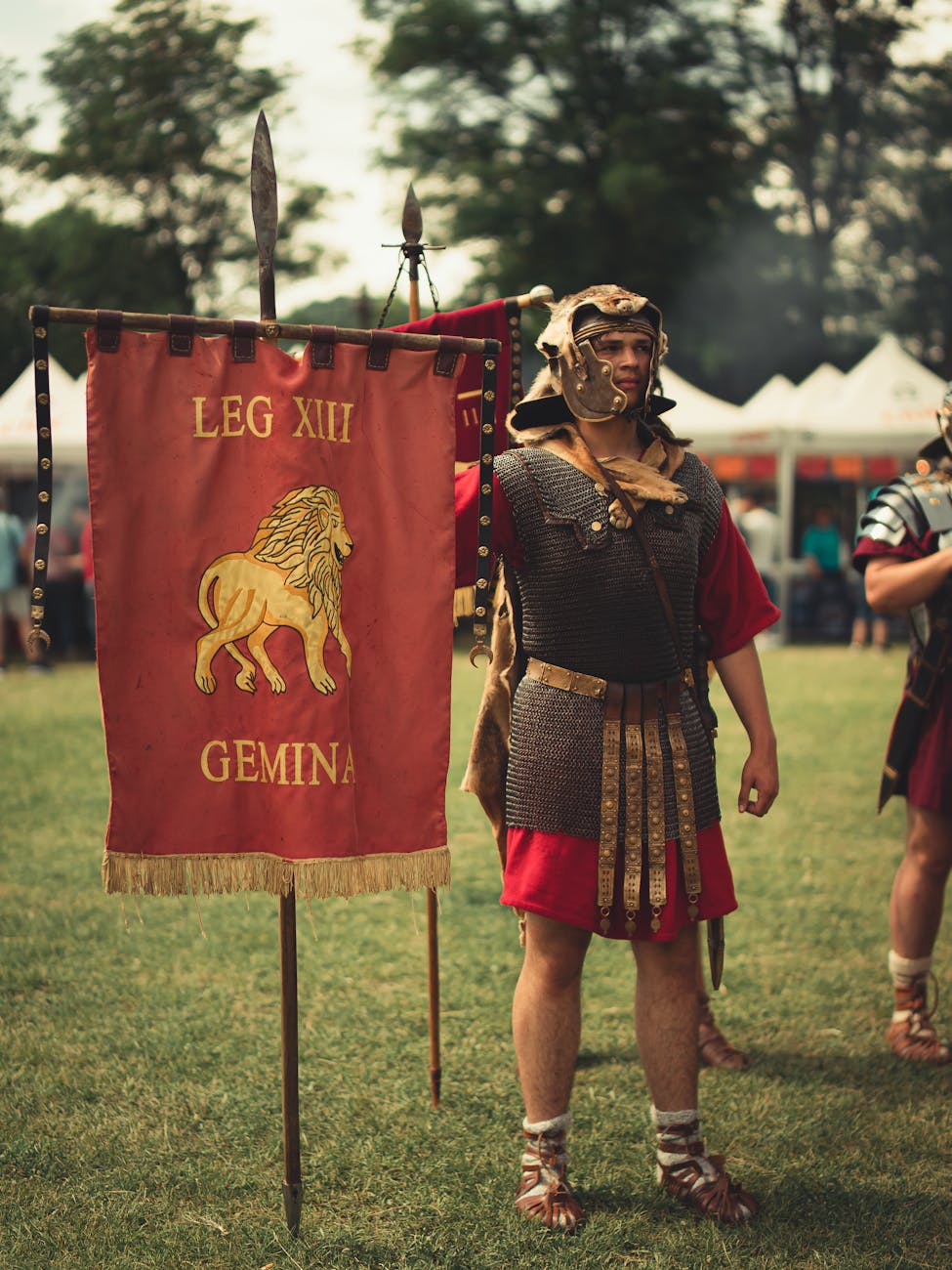
We often think of the Roman Empire’s fall as a definitive end. But the truth is more complex. The Eastern Roman Empire, also known as the Byzantine Empire, continued for centuries after the West collapsed. With its capital in Constantinople, it preserved much of Roman culture, law, and tradition, keeping the legacy alive in a different form.
Read More: 15 Legendary Lost Treasures: Fact, Fiction, and the Hunt Continues
Conclusion
The Roman Empire was a complex mix of brilliance, brutality, innovation, and the occasional touch of sheer madness. Its legacy still shapes the world – our laws, our languages, our buildings, and even how we think. These mind-blowing facts remind us that history isn’t just about dusty dates and grand battles. It’s full of the strange, the quirky, and the surprisingly relatable moments that make the past feel vibrantly alive.
15 Frequently Asked Questions (FAQs):
-
What made the Roman army so powerful?
The Roman army was a formidable force for several reasons:
Organization: They weren’t just a horde of warriors; they were divided into disciplined legions with clear ranks and tactics.
Training: Roman soldiers were rigorously trained, becoming masters of formation fighting and adaptable to different terrains.
Technology: Superior weapons like the gladius (short sword) and siege engines gave them an edge on the battlefield.
Logistics: The Romans were masters of supply lines, ensuring their troops were well-fed and equipped even on long campaigns. -
Did all Romans wear togas?
Think of togas as the fancy suits of the Roman world. They were formal wear for citizens, but most Romans wore simpler clothes for everyday life. Men typically wore tunics (knee-length shirts) and cloaks, while women wore longer tunics called stolas.
-
Were all emperors terrible?
Rome had its fair share of crazy, cruel emperors (hello, Nero and Caligula!). But some were genuinely skilled leaders. Augustus, the first emperor, brought peace and prosperity after years of civil war. Others, like Trajan and Marcus Aurelius, are remembered as wise and just rulers. It was a mixed bag!
-
What exactly was a gladiator?
Gladiators were professional fighters, often slaves or prisoners of war, who were forced to fight to the death for public entertainment. However, some freemen also chose to become gladiators, seeking fame and the chance at winning their freedom.
-
Why did the Roman Empire fall?
This is the question historians have debated for centuries! There’s no single answer, but here are some major factors:
Internal problems: Corruption, economic struggles, and political instability weakened the empire from within.
External threats: “Barbarian” tribes like the Goths and Vandals put constant pressure on the borders.
Overexpansion: The empire got so huge it became almost impossible to govern and defend effectively.
A bit of bad luck: Plagues and poor harvests didn’t help matters either! -
Did they really eat lying down?
Only elite Romans did this, and only at elaborate dinner parties. It was a symbol of luxury and status. Most people ate sitting on chairs or benches, just like we do today.
-
Was Roman wine any good?
The Romans were big on wine, and while some of it might taste a bit funky to modern palates (they sometimes added spices and seawater), they produced some highly praised vintages. It was a significant part of their culture and trade.
-
Were Roman women completely powerless?
Women in Ancient Rome faced limitations compared to men. They couldn’t vote or hold public office. However, some women, especially from wealthy families, could wield considerable influence behind the scenes, managing businesses, owning property, and even influencing politics.
-
Is Latin a dead language?
Technically, yes, it’s not spoken as a native language anymore. However, Latin is the root of modern Romance languages like French, Spanish, Italian, Portuguese, and Romanian. Plus, it’s still used in scientific terms and some religious contexts. So, it lives on!
-
What was the biggest gladiator fight ever?
Emperor Trajan takes the prize for spectacle. To celebrate his victory over the Dacians, he held a massive festival featuring 10,000 gladiators fighting over several months. That’s the ancient Roman equivalent of a blockbuster sporting event!
-
Did Romans invent pizza?
Kind of! They had flatbreads with toppings, similar to a simple pizza. But it wasn’t until tomatoes, a New World ingredient, were introduced to Europe that modern pizza as we know it came to be.
-
Could you become a Roman citizen if you weren’t born one?
In the early days, no, but over time the empire realized it was smart politics to gradually expand citizenship to conquered peoples. By the 3rd century AD, nearly all freeborn people within the Roman Empire were citizens.
-
Did Roman numerals hold back their science?
A bit, yes. Try doing complex calculations with Roman numerals – it’s a nightmare! Their math system was fine for everyday stuff, but it became a limitation when dealing with advanced engineering or astronomy.
-
Is there a Roman city buried under ash?
Yes, and it’s incredibly eerie! Pompeii and Herculaneum were Roman towns destroyed by the eruption of Mount Vesuvius in 79 AD. The ash preserved them almost perfectly, giving us a shocking glimpse of everyday Roman life frozen in time.
-
Where can I see Roman ruins?
The Roman Empire was massive! You can find amazing ruins throughout Europe, North Africa, and the Middle East. Some must-see spots include the Colosseum and Roman Forum in Rome, the ruins of Pompeii, Hadrian’s Wall in Britain, and the amphitheater in El Jem, Tunisia.




